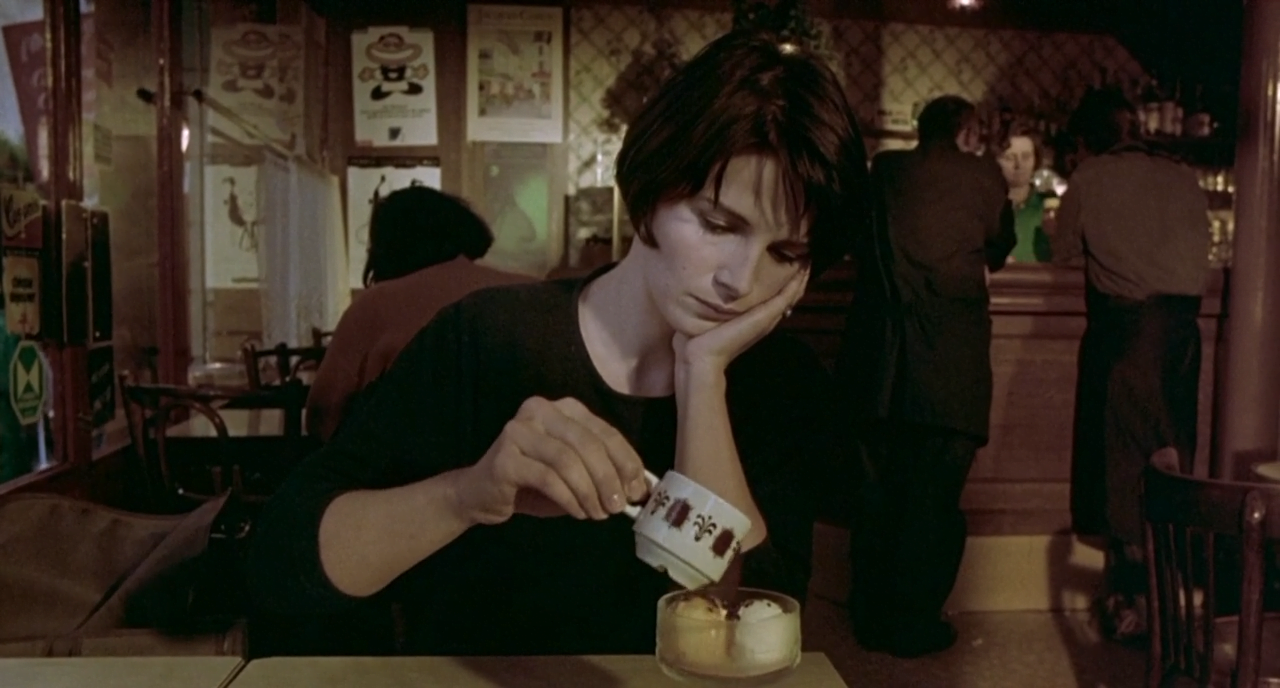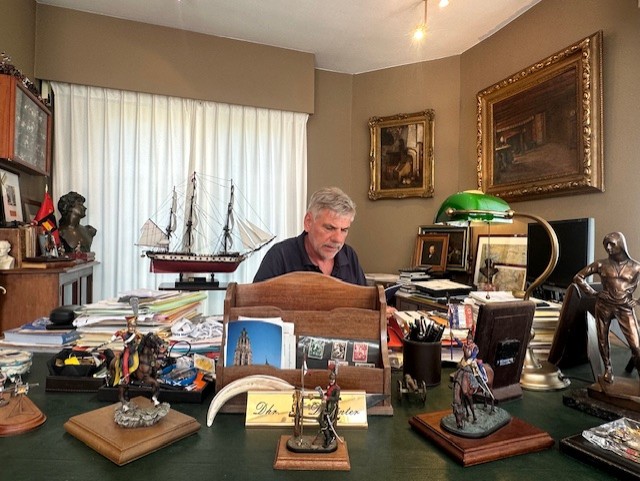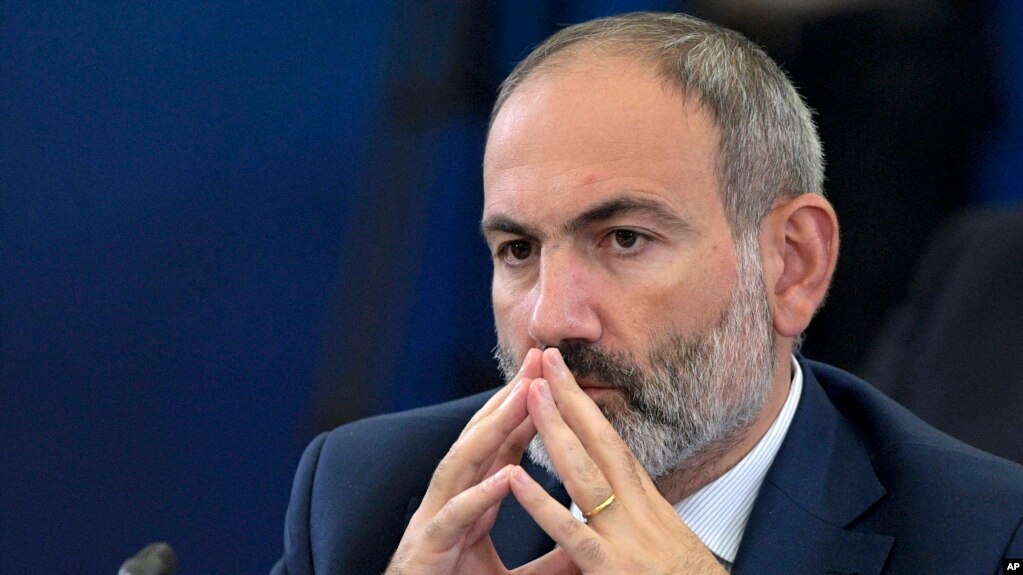
By Emad El-Din Aysha, PhD
I remember a time when a cabbage could sell itself by being a cabbage. Nowadays it’s no good being a cabbage – unless you have an agent and pay him a commission. Nothing is free anymore to sell itself or give itself away. These days, Countess, every cabbage has its pimp.
--- Jean Giraudoux, The Madwoman of Chaillot
France’s Colour Coded Responses
Let me just say first off that Blue Is the Warmest Colour is a spectacularly well acted movie, pioneered by the semi-romantic duo of Adèle (Adèle Exarchopoulos) and Emma (Léa Seydoux). Both give very heartfelt natural performances. Léa Seydoux is very sophisticated and deep, contrary to the many stereotyped roles she’s given in English-language movie, and Adèle Exarchopoulos is a positive treat, raw and tragic and wonderful. Her smile and upturned nose help a lot as does Léa Seydoux smoothness and roundish face. They’re both pretty good looking too. That should be just an added bonus, but it isn’t!
The key to deciphering the movie is the very title itself, although not the original title of the two part film in French (La Vie d’Adèle – Chapitres 1 & 2). The ‘assumption’ everybody is operating under is that the colour is a reference to Emma, the art student that the 17-year old protagonist Adèle falls madly in love with. Emma has blue stylised hair, after all. In a way it is but only indirectly as a reference to something else. You get a hint of this in the closing sequence when the grown up Adèle – a name that means ‘justice’ in Arabic (عدالة), something you’re explicitly told – is in Emma’s art gallery and you’re told how she had a blue phase and a now is in a red phase in her paintings and drawings. That’s true of artists, Picasso being the classical example, but given that Adèle is dressed in blue in that scene – again something that’s pointed out – you feel there is more going on. Also bear in mind that while Emma has blue hair early in the story she reverts to her native blonde afterwards, and certainly by the end of the movie. Her blue hair is actually more feminine and her blonde haircut is actually more masculine.
So what’s the deal with the colour blue? I’ve always noticed, over the years, how French movies have a distinctive bluish hue to them, a lighter pasty shade of blue. I even once asked a French girl if blue was her favourite colour and she said no, because there was too much of it as it was; she preferred green and yellow instead. An exception to the rule actually given that her choice in clothes are predominantly blue. (Blue is also a big deal in the original novella Monsieur Ibrahim et les fleurs du Coran, in reference to the river Seine and the Normandy coast). Then it finally hit me… the tricolour, the French flag, and famous French cinema epics like Three Colours Blue, White and Red. (With the English, you get fifty shades of an already boring colour like grey!) The flag itself is a reference to the three principles of the French revolution – Liberty, Equality, Fraternity. I’m not sure it’s as literal here in this particular movie, given that the director is ultimately Tunisian, but the point is that the movie is a reference to France as a whole, a country with a mutating, tumultuous identity that can’t quite make its mind up about what it’s all about. Adèle, the focal point of the story, is the very embodiment of that. She doesn’t know what she wants, and not just in terms of sexual orientation. She’s a veracious eater, gobbling down meats profusely along with sweets – shades of Lolita again – while being freaked out by the more choice foods like oysters, which Emma is into.
UNKEMPT BEAUTY: Adèle Exarchopoulos in 'Blue is the Warmest Colour', waiting for a tune up in these uncertain times.
Same goes for sex and sexuality. Adèle is kissed by a girl at school, after she failed with a guy, then goes to that girl to consummate a proper sexual relationship and the other girl chickens out. Then she goes with a gay friend to a gay bar and is intrigued by how definite and certain the gay men are, parading their sexuality, and after that goes to a Lesbian bar and encounters Emma properly. (She’s seen her once before while crossing the street and was instantly attracted to her). Later, when she suspects Emma is leaning more towards an old flame of hers – the very pregnant and single Lise (Mona Walravens) – she goes out on a date with a male colleague and the scene where they are dancing to the Tango is positively riveting. She’s glowing with femininity and sexual assertiveness, taking the initiative to kiss the guy and very passionately, getting her hairstyle sorted out and stripping to an extent, and then having an affair with him afterwards. What ‘makes’ her attractive ultimately is attention, getting the kind of care and attentiveness she probably didn’t get as a little girl from her working class parents who are very nice and well-meaning people but probably busily at their jobs all the time. (She is an only child as well). As for what draws Adèle to Emma, apart from her Anglo-Saxon looks, is her certainty. How relaxed Emma is as to whom she is and what she prefers, compared to the perpetual state of existential doubt that Adèle is in. Mirror-imagining again. (I’d say Emma swung one way as opposed to the other because of the multiple step fathers she’s had to put up with, forcing herself to become the man of the house. It would explain her refusal to betray Lise at the end, and her condemnation of Adèle for her slip-up).
Just the look of the girl is indicative enough. She hardly has any makeup on for two thirds of the movie and her hair is a mess, something that’s amazing for a country like France that prides itself on etiquette and makeup and fashion. She’s like an undeveloped photo and only fully blooms into womanhood by the end of the movie. (Shades of Cameron-Mackenzie Davis in Halt and Catch Fire, with the physical transformations you see extending from season 1 to season 4). She has difficulty expressing her emotions and loosening up, even for a dance on her birthday. There is also her ‘hybrid’ look. Her skin has a distinct tone to it that makes her look southern Mediterranean, contrasted to the almost Germanic looking Emma (and her ex Lise), although her face, nose and mouth are about as European as you can get. The actress in real life, it turns out, does in fact have the Arabic name Adèle, while her father is Greek.
Multiculturalism is rife everywhere. Adèle’s hapless father makes a mean spaghetti dish and Adèle herself titillates Emma’s friends with the same dish. Her friends at school are mixed culturally and throughout the movie – she becomes a teacher herself – you find all these cultural things being incorporated into the educational system with kids of all colours and religions. There’s also the small time Arabic actor character Samir (Salim Kechiouche) who loves the polyglot city of New York, a character who is a clear stand-in for the director. He queries Adèle about her lesbian life, finding it intriguing, while a Latin dude blabbers away about how women enjoy sex so much more than men do, even bisexual men like him.
Underneath all this skin deep cosmopolitanism is a class antagonism. The movie is arguing that the ultimate problem in France isn’t so much foreigners or sexuality or religion but the standoff between the rich and the poor and the kind of snobbish, paternalistic attitude the rich take towards the rest of society. Emma helps Adèle studying philosophy, not her strongpoint at school, and using her private tuition sessions to have sex with her behind the backs of Adèle’s gullible parents. (French kids are into that kind of thing, I’m told, but it kind of exposes her as a phoney intellectual. Adèle first belated boyfriend is into Maths, another big deal for the French). In one scene Emma explains her love of philosophy is all about guidance, the philosopher taking on the mantle of a prophet, so to speak; the director is an Arab, remember. Moreover, when Adèle is living with Emma she practically becomes the supportive, submissive housewife type, always using food and coffee as a way of comforting Emma for her business altercations as a struggling artist. Lise falls into the same trap afterwards. (So Adèle did have a right to be suspicious, especially as Emma refuses to have sex with her, using her periods as the trademark excuse!) Emma’s friends are as multicultural as they come but you still feel that this is skin deep, since the Arab boy Samir goes from being a two bit actor playing a terrorist in Hollywood movies to a real estate shark screwing people, and he himself admits to this at the art gallery scene. Adèle also explains to Emma how she was able to make it to the gallery, on foot, because she’s now got a home in a neighbourhood close by – a ‘nice’ neighbourhood – and afterwards leaves the place, feeling that this is not her scene and these people aren’t her crowd. Samir is distracted for a moment and then runs after her afterwards but goes the wrong direction, signifying that the gap between these two groups of people will never heal any time soon. You also hear the Tango tune from that fateful dance of hers in the background, signifying how she is probably going back to her life, the school, and maybe that colleague she dated and cheated with. (!!)
By contrast her original friends at school are very gruff and rough, using bad language and not always terribly well dressed and even, God forbid, eating with their mouths open while they talk. (And this, from a ‘French’ movie. You also notice how her parents watch the TV while they have dinner, again a no, no in French culture, and can’t cook a chicken right because it was frozen and not fresh, compared to the stuck up family of Emma that eats fresh oysters). They also get agitated when they see Adèle going to Emma, as if this is some sort of classist affront. Emma invited her to a queer rally once and its full of multiracial performances, which is great, but its contrasted to an earlier student rally she participates in arguing against privatisation and for youth and workers rights, and it’s just as multicultural, if not more so. And you really like Adèle in that rally. She looks so happy and ‘proactive’. Again, all the more reason for her to go back to school at the close of the movie, with all it signifies in terms of equality and moulding minds and building a better future. A more just and equalitarian future.
Hence, the character’s name, Adèle – since justice is ultimately more important than freedom, if by freedom you just mean self-indulgent pleasures while the rest of society goes to the dogs. The film isn’t perfect, mind you. The director clearly likes France and the ‘opportunities’ it opens up for him, as an Arab and a Muslim. In lieu with that philosopher-prophet quip above you get another hint that I didn’t entirely catch onto straight away. Adèle says she loves literature but is unhappy when teachers overinterpreting a text, not giving her enough room for creativity. I think this is tongue-in-cheek reference to either the Quran in Islamic history or French legalism. I’ve been told that the secular French legal scholars are as stern as religious scholars over here, but it’s still inexcusable for someone like Abdellatif Kechiche who is, at the end of the day, a Tunisian. As if Tunis isn’t secular enough and no different than Iran and Saudi Arabia. And what exactly is it he’s looking for in France – liberation or liberated ‘white’ women? When you watch the sex scenes by themselves, and they are positively astounding, you detect the unmistakable whiff of manly fantasy – something highlighted repeatedly by feminist and lesbian movie critics.[1] It’s not nearly as bad as what you get in Bertolucci but you do feel the director, as a ‘Mediterranean’ man, is fascinated by how prone (and not so prone) women are to feeling certain things, especially if they sleep on their tummies while insisting on wearing tight slacks. Climatically you also notice a similarity between how Bertolucci portrays France’s capital city in Last Tango in Paris and Blue is the Warmest Colour, since it’s surprisingly cold, with characters bitching and complaining about the weather. Again, a Mediterranean look at the world up and above and the coldness of northern European modernity. The way the heroine is portrayed also has a ‘domesticity’ to it, given how caring and maternal she is with the schoolchildren, even when at the beach – making sure they’re happy and safe more than enjoying herself or ‘advertising’ herself, even to the viewers of the TV screen. (Imagine that!)
CENTER STAGE: Director Abdellatif Kechiche, flanked by Adèle Exarchopoulos and Léa Seydoux. Is he pulling them together or driving them apart?!
I’m also going to have to agree with the feminists, for once, on the ‘male gaze’. It is quite evident here, as you have the classic struggling artist-muse scene with Emma doing a charcoal drawing of a very naked Adèle. The girl is lying on the bed or coach, white sheets beneath her to accentuate her (delicious) complexion and she’s smoking a cigarette, a very erotic proposition. (No comment on the hand-held symbolism). And yet, despite all of that, you can’t help but notice that a certain lethal part of her body is obscured in the drawing. Why, I wonder? Probably not to open up perfectly justifiable charges of ‘gazing’ too intently at all those nether regions!
Still, it’s the constructions of othering in this movie that interests me the most and lets you forgive everything else. The homosexuality is almost incidental, to be honest, and I’m here for its relevance to sexuality and sci-fi. French women, it seems, aren’t nearly as aggressive when it comes to lesbianism, compared to North Americans. Hence the absence of bitch slapping, sexual harassment, dildos and doggy style sex, and the endless kissing on the cheeks and the fact that Emma does not seduce Adèle. Instead she introduces her slowly to the lesbo lifestyle and indulges her her appetites, and all this despite the fact that she’s the older and more independent of the two. It seems French men are far more gentlemanly than their North American counterparts and so violence and force doesn’t go into othering, at the sexual level at least. (In one scene Emma complains about her Dike fans not liking her too feminine works of art). There is no tongue-in-cheek denigration of committed heterosexual men, unlike Below Her Mouth (or Halt and Catch Fire to be honest); no perception of them as the less deserving somehow stealing the quarry of the more deserving lesbian woman, as it were. (When Rile gets ‘riled’ up about Jasmine betraying him, he says ‘don’t touch me’, which is what women always say when they catch their men cheating).
French men are also more open about crying; Adèle’s first boyfriend weeps when it becomes clear she isn’t interested in him. With less of a gap, or chasm, between men and women, the French women don’t have to force themselves to outdo the men at their own game. The male role-model they’re trying to emulate is less extreme, less distinct, and so the psychological side-effects are also less nasty. Note that Adèle is also taller than Emma, although not massively like Dallas and Jasmine, meant to signify her equal status as a minor up against a grown college girl. And she has a somewhat hoarse voice unlike the inexplicably more feminine Emma. (Have to watch out for all those growth hormones, don’t you, which would explain her ‘appetites’). Kudos to the director again. He’s more than a voyeur; he’s an anthropologist standing back from the society he is immersed in to critique it and pick it apart, then reassembling it again in a hopefully better future form. That’s probably why the classism isn’t portrayed so extremely. As an Arab, something I can vouch for, all white people look the same to him; more so if they’re attractive and female. The timelessness of what’s going on is indicative of this too. As Arabs the West looks all the same to us – we find it hard to distinguish one era from the next in their modern history, from the 1950s to the present. I honestly don’t remember seeing any mobile phones here, signifying that France is in a kind of permanently locked-in identity loop, with the end of the Cold War and then 9/11 after that.
To us as Arabs we can’t understand why someone, least of all an attractive girl like Adèle,, would ‘resort’ to lesbian sex when she can have any man she wants. What’s the point of free sex then? Things like that happen in Arabic countries, some more than others, specifically because boys and girls aren’t allowed to communicate with each other because of excessive conservatism or a lack of mixed schools. (I’m not naming any Arabic country in particular, mind you).
We feel as a consequence that Europeans are spoilt for choice, which they are to be honest, indulging in absolutely anything just for the fun of it. I know I’m being preachy here but I really did like Blue is the Warmest Colour, and respect its objectivity, portraying a wide range of men (good and bad) and also lesbians as they actually are, with jealous temper tantrums and the ability to betray each other, even with men. The expertise with which the story is presented, with excruciating detail, is food for thought and avoids hackneyed formulas and propaganda techniques. I’d like to say that about Below Her Mouth but can’t, and there’s lots of blue there too but not quite to the same effect. (I prefer red and green personally, and not just politically!)
From Commiserations to Conclusions
Now that annoying third movie, The Exterminating Angels, to be fair. Classism turned out to be the major defining thematic in that film, with the guardians of the land who are supposed to bridge this chasm – whether cops or movie directors – failing at their job or downright abusing it. The classism is so bad in fact, so chokingly hypocritical, it makes it impossible for upper class French girls to enjoy themselves in bed, since that’s something only fit for working class girls!
This confirms what we said about Blue is the Warmest Colour and I can add once again the contrast in complexions between Adèle and Emma, one with distinctly warm Mediterranean features and the other pompously Germanic. (A Sudanese friend also noted how Emma can get away with having former loves whereas Adèle is always under suspicion). You can even see such colour and region contrasts in that French classic of classics, Emmanuelle, the novel and the movie.[2] (Makes you wonder what they’ve got to complain about in such a bleeding heart liberal country as Canada. Why all the girl-on-girl crime in Below Her Mouth?) Another lesson from that Angels movie is that a woman’s experience of pleasure isn’t tied up at all with physical activity, even from a considerate and skilled lover but from how a woman imagines herself to be and look like in the sexual act, and often as perceived by her partner. That is spot on what Adèle was suffering from in her first sex scene with a genuinely good boy who really cared about her and wanted to make her happy. She has a low opinion of herself, as unformed and immature and uncertain and also of a low class background, and it drags her emotions and physical responses down with her. Hence that wondrous tango scene where she finally feels desired by a man and really blooms as an assertive woman, if not sexaholic. (No comment). Much the same goes for poor, sweet Reno; not to forget Yorkie in San Junipero.
Reno doesn’t feel herself to be a woman, a real woman, or girlfriend material so she takes it out on herself and decides to take things to their logical conclusion and become a tomboy. Her mother isn’t exactly a role-model of femininity either and portends badly as far being a housewife or widow is concerned. Women are far more self-conscious about their appearance than men and internalise what people say about them, behind their backs to their faces. It’s like they carry a mirror inside their own heads, reflecting how ‘others’ see them into their mind’s eye and their whole damn nervous system. (Women standing outside the themselves is a theme in two other Mackenzie Davis films, if you must know – the dementedly disturbing Always Shine and the hilarious Charlize Theron movie Tully; see below).
This of course is compounded with the more normal sense of personal guilt and social inadequacy woman suffer from, usually beaten into them by their mothers. (Reno’s mother tries to make her feel guilty for wanting to leave). Not to forget that they don’t understand our lingo as men, misinterpreting how we use words like boyish and beautiful and attractive and lovely, taking them at face value and assuming that men mean the same thing as they mean by the self-same terminology. Guidance in these things is terribly important, from men in general but fathers in particular, something you see clearly in the Angels movie given that several women come from broken homes or are illegitimate children or were raped early on in their lives because they had no loving, caring guardians. The endless bemoaning of French boyfriends as conceptually insensitive, nocturnally incompetent or overly jealousy is meant to highlight this. This tracks back again to Emma and Reno and even Ellie to be honest. I should add that girls are also very sensitive about their height, which would explain why short girls – Madonna, Jodie Foster, Marlene Jobert, Eva Green – all got onto the sexy track in their careers to make themselves feel equal to tall woman. The irony of course is that they don’t realise that tall women are just as sensitive, and those girls in turn don’t realise that men generally prefer tall girls. (You can ‘see’ everything more clearly, including muscular tension, whereas short girls are presumed to be soft and cuddly. Not to mention callous self-reflexiveness with short men being into tall women, and tall men into short women, and medium height guys getting the best of both worlds!)
Look at how Mackenzie Davis’s male co-stars uniformly love her – all kiss and touch her the same way – and you can see just how beautiful she really is, and not just on the inside. You can also tell how much they admire her talent and dedication as an actress. I’d noticed once, by accident, how MD doesn’t wear sunglasses in Izzy Gets the F*ck Across Town (2017), which is odd given that Mackenzie is a Canadian growing up in very different light levels. Found the same thing in Bad Turn Worse. In A Country Called Home however, she also doesn’t wear shades, but she does squint her eyes on occasion in the glaring sunlight. She’s forcing herself to behave like a Texan who can handle the sunlight, hurting herself in effect. Talk about dedication!
EMOTIVE VISION: Texan twins, Reno and Sue, proving that the eyelids can be windows to the soul when all else fails!
To finish off from where we started, the construction of othering in A Country Called Home, women again are serving as the classic motif for land and nation but in a split personality fashion thanks to men letting their women, and country, down. Hence the gender divide of sorts between Ellie and Reno.[3] Ellie and Reno heading off to California together is meant to be a reconciliation between the land of cold, calculated opportunity and fakery that is the West Coast, and the moral heartland where people are warm but left behind and slowly going insane and being forced constantly to fend for themselves. If those two halves could mend bridges the whole country would be a hell of lot better off. Who would think you need cultural outreach within a single country, and between white people, but that’s pretty much what you see in Blue is the Warmest Colour since Adèle, not coincidentally, teaches French. Proper pronunciation and grammar is a big deal for the French. At the same time she loves American movies and doesn’t need the subtitles. Justice and fairness to all is what breeds real, in-depth cosmopolitanism and a commitment to globalism that doesn’t go against national integration and cultural particularlism. Tackle classism and the cultural divide will heal itself by itself, and the same goes for responsible male figures, on the model of Jack and Cole in A Country Called Home.
Can’t say the same for The Exterminating Angels sadly since women there are mainly portrayed either as weak and uncooperative or spicy but conniving, with the male protagonist as the one trying to cope with both and paying the price for it. The only other model of male on display is the thinly disguised pimp model, so it doesn’t pass the said test of objectivity, unlike the two aforementioned movies. The Angels director, being exclusively French, is just a voyeur here, not an anthropologist, and so can most definitely be accused of the male gaze. I could too to be honest, but as a ‘minority’ I can get away with it. All hail political conveni… err, correctness!!!
Acknowledgements
Special thanks to El-Mubarak Saleh.
NOTES:
[1] Please see Michelle Juergen “Blue Is the Warmest Color gets lesbian sex wrong”, Salon.com, 8 November 2013, https://www.salon.com/2013/11/08/blue_is_the_warmest_color_gets_lesbian_sex_wrong_partner/, and Anne Thompson and Beth Hanna, “Feminists Debate Cannes-Winner Blue is the Warmest Color’s Patriarchal Gaze”, IndieWire, 25 October 2013, https://www.indiewire.com/2013/10/feminists-debate-cannes-winner-blue-is-the-warmest-colors-patriarchal-gaze-195397/.
[2] Emmanuelle is contrasted with her dark, curly hair to the blonde decadent aristocrats and also the American girl Bee; she’s even likened to the dark-haired Italian dude at end, Mario. And, wouldn’t you know it Emmanuelle was good at maths at school and was disappointed for not continuing her education when she marries her half-pimp of a husband. Seems maths is a means of career advancement and status in France and no more.
[3] Watch Tully (2018) and you get a lot of these self-same themes. The very pregnant heroine Charlize Theron is named Marlo, quite a masculine name, especially compared to her husband’s name ‘Drew’ – is that Marlin Brando and Drew Barrymoore? Marlo, moreover, was in love with her former roommate, a girl jealous of Marlo’s boyfriends, with no clarification given as to whether this was sexual love or just admiration. There’s a sex fantasy-seduction scene involving Mackenzie Davis too that is also reminiscent of the female projection you get in Blade Runner 2049 and Henry and June, mentioned in previous articles.







[…] contra the female gaze argument. There is a girls-spying-boys voyeur scene in Now and Then (1995), the male gaze sketch scene in Blue Is the Warmest Colour (2013), not to forget lesbian exploitation and murder in Jordan Scott’s Cracks (2009), adapted […]